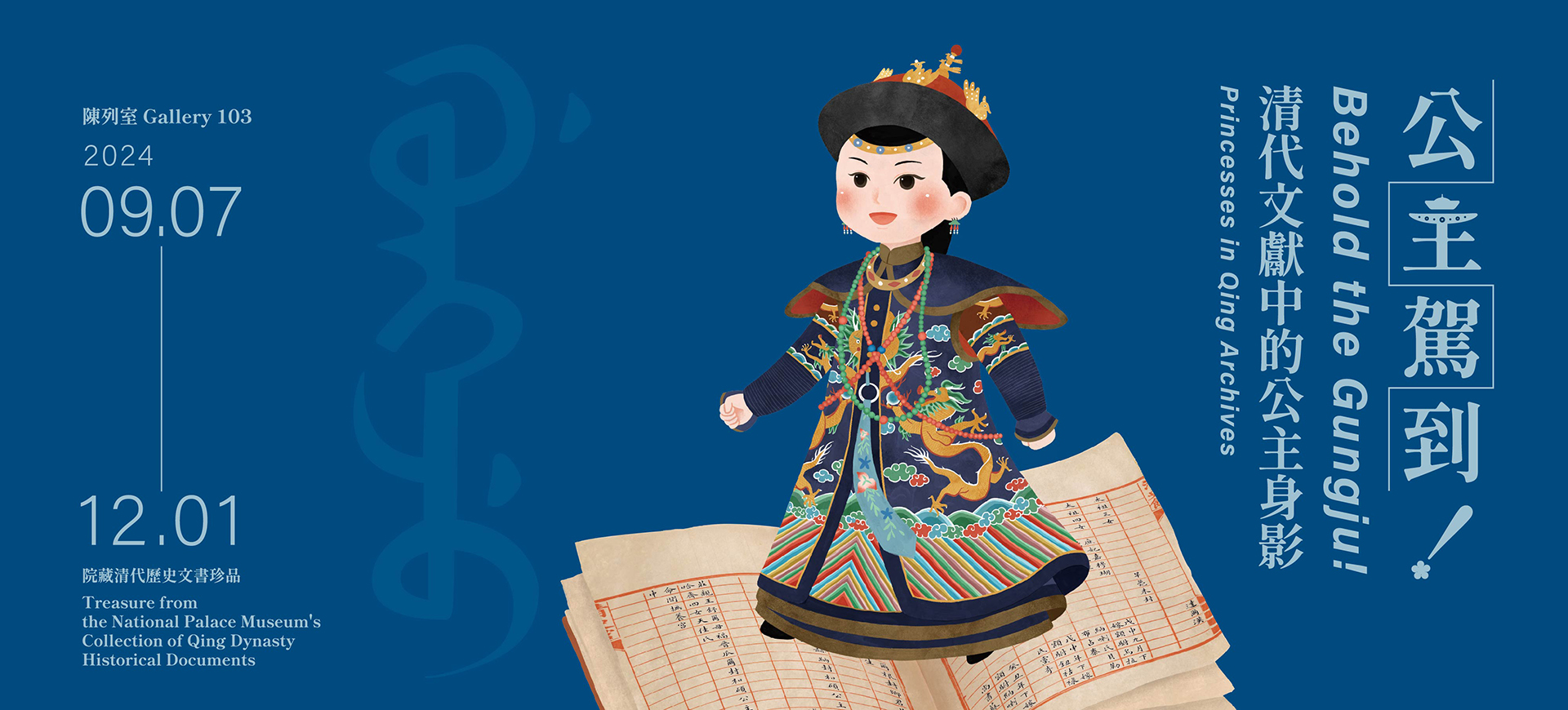Royal Treasures Unveiled
While princesses were women of their time, their royal status granted them significant assets and privileges. Their possessions, ranging from money to various properties, were allocated by the imperial household and both supported the princesses’ daily lives while also reflecting imperial systems, traditional Manchu women’s culture, and the symbolic status of princesshood.
A princess’s belongings reveal a unique material culture of princesshood, preserving intricate details of their lives and offering a window onto their world.
-
Portrait of Princess Shouzang (1829–1856), Fifth Daughter of Emperor Daoguang
19th century
Ink and colors on silk
National Museum of Asian Art, Smithsonian Institution, Purchase — Smithsonian Collections Acquisition Program and partial gift of Richard G. Pritzlaff, S1991.122The figure depicted in the scroll is likely as a Qing dynasty princess, though there are different accounts about her identity such as the fifth (Princess Shouzang of the Second Rank) or sixth daughter (Princess Shou’en of the First Rank) of Emperor Daoguang. Surviving portraits of Qing dynasty princesses containing their personal information such as visages and postures are rare, making this portrait painting a valuable artifact. The clothing, accessories, and styles depicted also provides valuable insights into traditional Manchu culture.
-
The Dowry List of the Gurun-i Gungju (Princess of the First Rank)
From Current Regulations of the Imperial Household Department
Compiled by the Imperial Household Department
Manuscript, late 18th to early 19th century
故官008506The content of princess’ dowry was not standardized until early Qing dynasty, when Emperor Qianlong finally formalized it. This approved dowry list between late 1745 and early 1746 details nearly 300 items, including clothing, accessories, gold and silver products, various household items, textiles, and livestock, showcasing the rich array of dowry items for Qing dynasty state princesses. Items for related people such as the groom, wet nurse, and nursemaid (important figures in the princess’ upbringing) were also included.
The dowry not only provided princesses with materials for their future lives but also symbolized the grandeur and dignity of the Qing imperial family. A closer look at these items designed for princesses reveals the material and cultural life of Manchu noblewomen.
-
Gidakū (Gold Head Band) Inlaid with Lapis Lazuli
Qing dynasty
故雜005977Manchu women adorned their foreheads with headbands referred to as “gidakū” in Manchu and as “headbands” in Chinese. In the formal coronet attire of Qing noblewomen, this headband accessory was called “gold headband.” This state princess’s dowry list includes an item described as “a gold headband inlaid with ten pearls.”
This particular gold headband in the NPM collection, presumed to have been made in the 18th century, features 10 gold cloud decorations and 10 pearls and was reclaimed by the Imperial Household Department in 1819. This 10-pearl gold headband corresponds to the one listed in state princess’s dowry.
-
Erihe (Court Necklace) with Jadeite Beads
Qing dynasty
故玉009580In this state princess’ dowry list, there are five different types of beads, each made from different materials (i.e., pearls, lazurite, green gemstones, corals, and amber), with two strands of each type. The so-called “green gemstone beads” likely resemble those made primarily from jadeite, a type of jade.
The use of jade in court necklace was quite uncommon in the early Qing dynasty, with jadeite being even less common. However, by the mid to late Qing dynasty, under the reigns of Emperors Daoguang and Tongzhi, jadeite jewelry became increasingly popular. This court necklace not only reflects the 19th-century trend for jadeite but also suggests that the materials used in princesses’ court necklace might have been more diverse.
-
Stele Commemorating the Fourth Princess's Benevolent Governance
From Newly Revised Gazetteer of Qingshuihe Compiled by Akedachun et al. Printed edition, 1883 Donated by the Ministry of National Defense 贈善021982
In 1697, the sixth daughter of Emperor Kangxi married Dondob Dorji of the Tüsheet Khan clan of the Khalkha Mongols and was granted land in the Qingshui River area (now within Qingshuihe County, Hohhot, Inner Mongolia). In 1727, the settlers of the princess’ land erected several “Stele Commemorating the Fourth Princess’s Benevolent Governance” These steles not only expressed the settlers’ gratitude towards the princess but also reflected significant changes in the Qingshui River area in the early 18th century. Disputes arose between the settlers and the native Tümed Mongols, and these steles served to establish both the princess’ prestige and the settlers’ legitimacy in their land development efforts.


